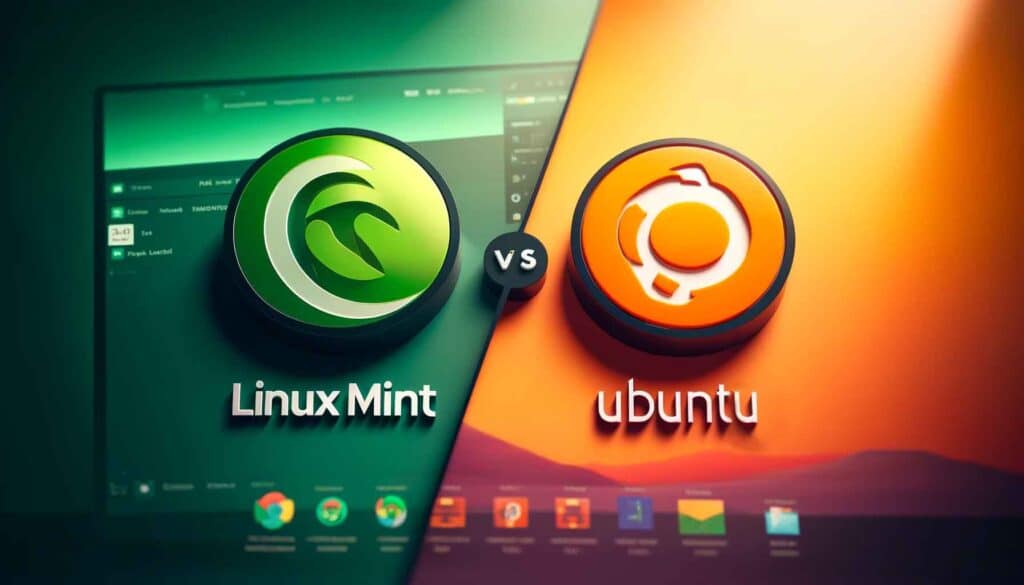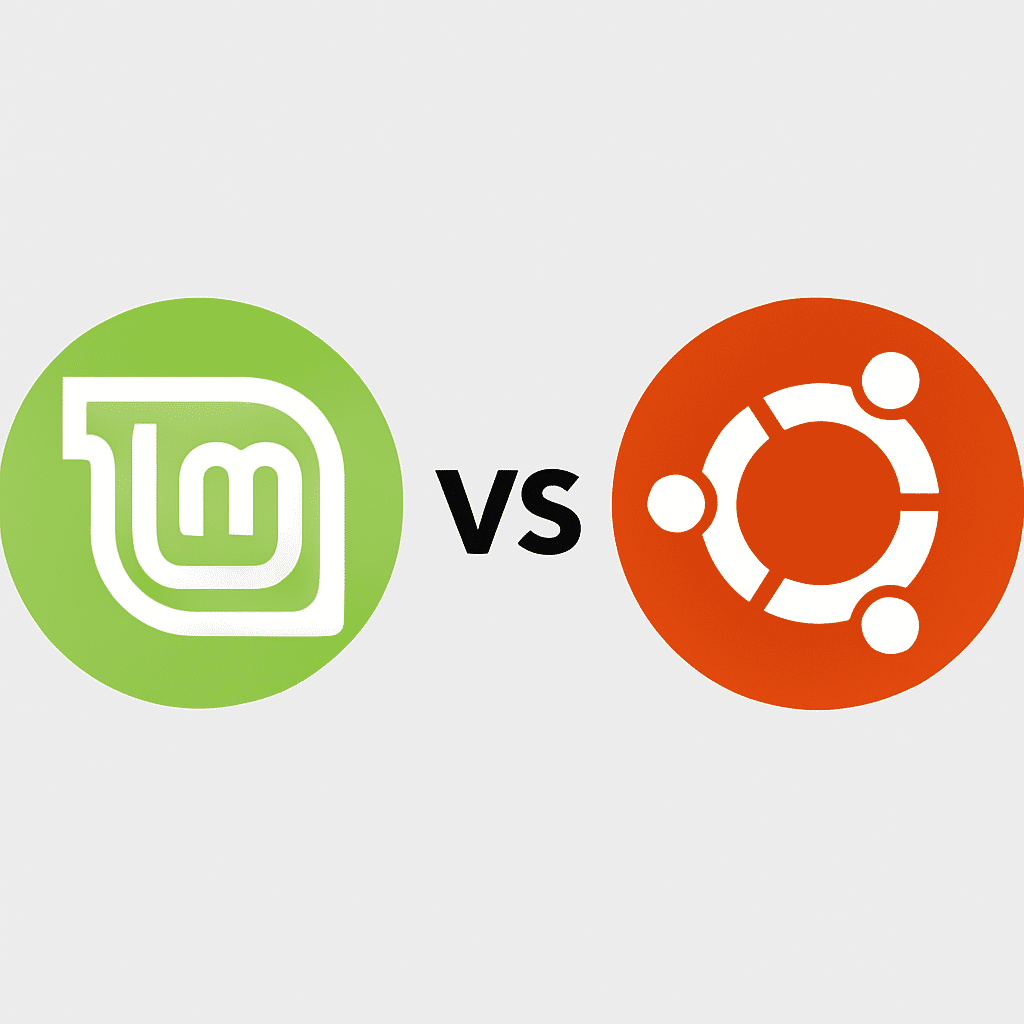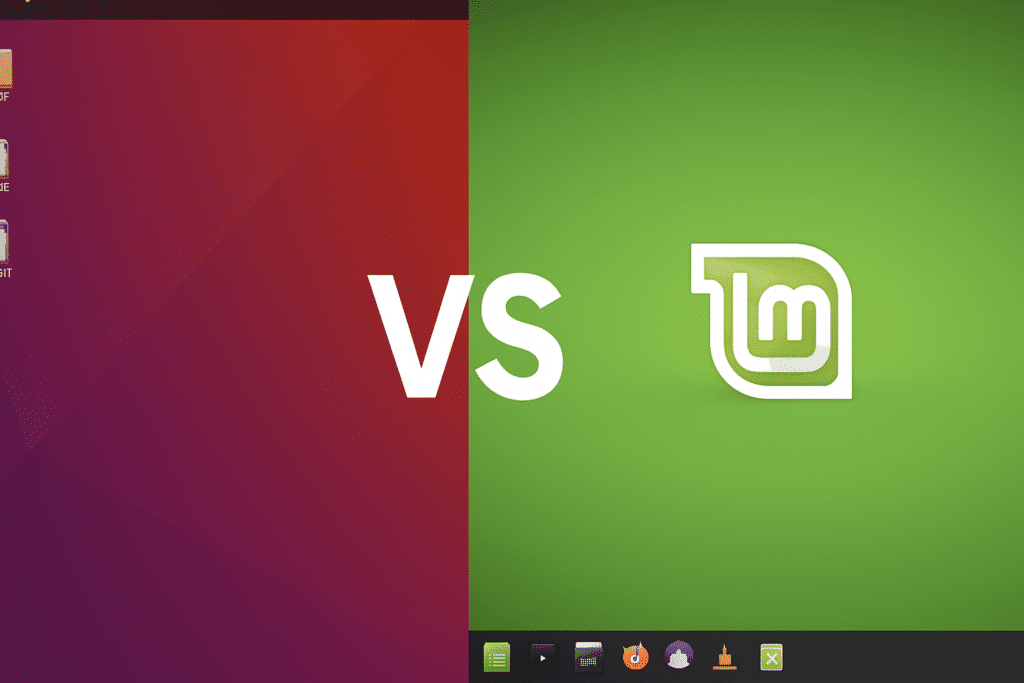Linux Mint vs Ubuntu: The Good, the Bad

In the world of Linux, you can find many distributions: different, similar, curious, heavy, light — a bit of everything.
There’s something for every taste and user.
But among the most common — or at least I think so — you can find Linux Mint and Ubuntu. That’s why I’ll give you some details and information, differences between the two, in case you’re still unsure which one to use.
In my case, I’ve used both for years and have experience with each.
Although both distributions share a common base, they have differences in terms of design, performance, and focus.

A Bit of History
Ubuntu
Launched in 2004 and developed by Canonical Ltd, with the goal of offering a Linux distribution that is easy to use, with professional support. Ubuntu is based on Debian and has gained wide adoption both in desktop environments and on servers and cloud systems. It features long-term support and a focus on innovation.
It’s a solid choice for enterprise users and developers.
Linux Mint
On the other hand, Linux Mint was born in 2006 as a more traditional alternative, more focused on the user experience. Initially based on Ubuntu, Mint seeks to offer a more familiar interface for those moving from Windows to Linux.
Linux Mint also has a version based directly on Debian, known as LMDE (Linux Mint Debian Edition).
Let’s Talk About User Interface
Ubuntu: GNOME
Ubuntu uses the GNOME desktop environment by default. It offers a modern, minimalist experience.
GNOME aims to simplify and make user interaction easier. However, this interface may be less intuitive for users used to operating systems like Windows.
Linux Mint: Cinnamon, Mate, and Xfce
On this side, Linux Mint offers three desktop environments: Cinnamon, Mate, and Xfce. Cinnamon offers a Windows-like experience — a preferred option for users transitioning from Windows, with a classic start menu and taskbar. Mate and Xfce are lighter options, ideal for low-resource computers.
Having 3 options gives you flexibility and choice. Generally, if your system is a bit old or has few resources, the recommended version is Xfce: fast and lightweight.
Performance and Hardware Requirements
In this category, I have to highlight Linux Mint. It tends to be lighter, especially when using the Mate or Xfce environments. This makes Mint an excellent choice to revive older, low-resource computers.
On the other hand, Ubuntu with GNOME demands more resources, which could negatively affect performance on older hardware. It’s not recommended for old computers — it consumes a lot.
Software Management
Ubuntu with Snap and APT
Ubuntu includes the Snap package system, developed by Canonical. It allows you to install applications with all dependencies encapsulated.
This makes installation and updates easier. However, some users express concerns in forums about performance and integration. Ubuntu also uses the traditional APT package system.
Linux Mint with Flatpak and APT
Linux Mint, meanwhile, has chosen Flatpak as its Snap alternative. It offers a similar experience but with a more community-driven approach.
Mint also uses APT and includes a very user-friendly software manager to facilitate installation and updates.
Updates and Support
Ubuntu has a large global community and professional support through Canonical. In terms of support, I believe Ubuntu has the upper hand, making it attractive for businesses and developers who need technical assistance.
On the other side, Linux Mint is community-driven, offering a friendlier and more responsive environment, supported by active forums and extensive documentation.

Customization and Flexibility
I must mention Linux Mint again, known for its high level of customization. Users can adjust appearance and behavior according to their preferences — you can change everything from windows, desktop, icons, mouse, and more.
Ubuntu is also customizable, but you may need to install additional tools or have slightly more advanced knowledge to avoid breaking something in the process.
Security
In this case, I think both distributions are secure and receive regular security updates.
Ubuntu, backed by Canonical, has a dedicated security team and offers enterprise solutions with extended support.
Linux Mint, while lacking official enterprise support, receives timely updates and includes tools like Timeshift for system snapshots.
Recommended Use Cases
- New Linux users: I recommend Linux Mint — easy to use, lightweight, fast, familiar interface, ideal for those switching from Windows.
- Developers and enterprise environments: Best choice is Ubuntu, due to its excellent support, compatibility with development tools, and wide documentation.
- Old or low-spec computers: Go with Linux Mint using Mate or Xfce. It’s fast and lightweight — perfect to revive your device.
- Tech enthusiasts wanting the latest: Ubuntu tends to innovate and receive newer technologies more frequently.
Conclusion
You can choose the version that best suits you and your needs. Both are very secure, easy to use, and highly recommended.
Do you enjoy the content we share?
Want to help improve our blog?
You're invited to fill out this form.

Scan to open form






ewee